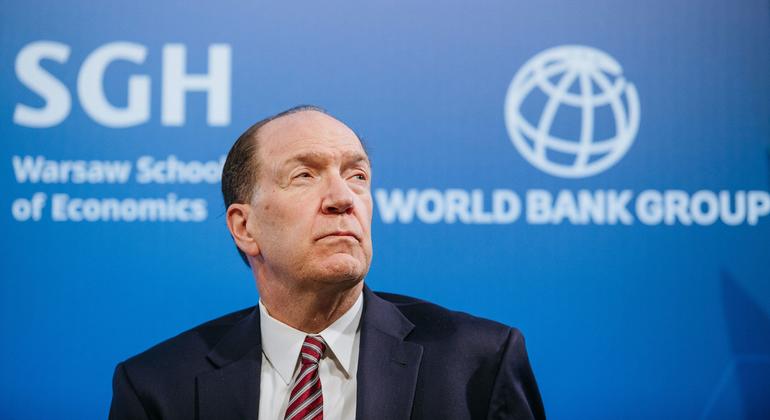Jacinda Ardern’s resignation as New Zealand prime minister has sparked discussions about burnout and when is the “right time” to leave a job. Some have written admirably about Ardern’s decision to leave, saying that she is being kind to herself and not overstaying her welcome – in contrast to many other world leaders.
One of the youngest holders of public office, Ardern had become an international symbol for how to integrate work and personal life. She famously held her infant daughter while addressing the UN general assembly. But now this narrative is marking her departure with misogynistic headlines such as “Can women really have it all?”.
This attitude suggests that Ardern didn’t know her limits, and maybe bit off more than she could chew. This is part of a larger misrepresentation of the phenomenon of burnout, which equates it with the need for people to take better care of themselves. Even Arden herself may have inadvertently reinforced this focus on the individual aspect of burnout with her parting words, urging people to “be strong, and be kind”.
This article is part of Quarter Life, a series about issues affecting those of us in our twenties and thirties. From the challenges of beginning a career and taking care of our mental health, to the excitement of starting a family, adopting a pet or just making friends as an adult. The articles in this series explore the questions and bring answers as we navigate this turbulent period of life.
You may be interested in:
Thinking about quiet quitting? Here’s why – and how – you should talk to your boss instead
How the philosophy behind the Japanese art form of kintsugi can help us navigate failure
How to disagree without making enemies in the age of the pandemic – tips from a psychologist
Many people (especially healthcare professionals) wear burnout like a badge of honour. Burnout is evidence that they have worked hard, putting everything into their job.
But in her resignation speech, Ardern said she “no longer had enough in the tank” to continue, suggesting that she felt continuing in the job was unsustainable. This is a necessary reminder that burnout starts with the work environment. Instead of asking why Ardern could not continue in her post, we should be asking what factors in her job contributed to her feeling this way.
The world is full of people like Ardern who would love to leave their jobs but can’t, due to their economic and social circumstances. As a prime minister, Ardern would have had many resources at her disposal. If even someone in her position can reach this point, it’s clear we need to be thinking more about how organisations treat people – not what people themselves can do to avoid getting burnout.
Recognising burnout
According to the World Health Organization, burnout is characterised by three elements, which can reinforce each other and create a vicious cycle:
- I feel continuously exhausted;
- I feel more cynical about my work;
- I feel less capable about my performance at work.
If you are experiencing these feelings, remember that burnout is not an individual failing but is driven and maintained by working conditions.
There is no doubt that individual level “solutions” (yoga, therapy, mindfulness, leaving your job) can offer some respite, but they will do nothing to address the organisational elements driving burnout. More importantly, they reinforce the dangerous narrative that employees simply need to be more resilient.
Much of today’s working culture rewards going the extra mile, often at personal cost. This mindset is particularly dangerous for new and younger employees, who want to prove their worth through overwork.
Some may feel they are expendable if they fail to perform, and that there are others waiting in the wings to replace them. This helps explain why people wait until it’s too late before a quitting a job that is toxic and bad for their health. It’s important to avoid becoming a martyr to your job, whereby you continuously ruminate about what you need to do to perform better, and hope that your sacrifices will be appropriately rewarded.
If you are stretched to your limits, take a look at how your workplace functions generally. If overwork is the organisational norm, you are likely not the only person suffering from burnout.
Preventing burnout
There are strong economic arguments for employers to address burnout. Evidence shows that poor staff health and wellbeing in the NHS is costly, with estimates in excess of £12 billion per year. Improvements in staff mental health could lead to initial savings of up to £1 billion per year.
Successfully addressing burnout is all about prevention, not intervention. But each industry has different demands – there is no one size fits all solution.

Vitalii Vodolazskyi / Shutterstock
A career is a marathon, not a sprint. You need to know about the conditions of the race, not just your personal fitness. We approach jobs wanting to know what the rewards and perks are, but we should be more interested in how employers will treat us if we break down.
Take an audit of how much your employer understands (or actually cares) about what is really driving burnout. Find out whether your organisation (or future employer) has a detailed plan on how to support your wellbeing. This should include when you are doing well, and when you are suffering due to the demands of your job.
Burnout can be related to feelings of anxiety and depression – find out whether your employer offers support for these issues, or resources if you need to seek outside help.
Ultimately, the best way to know if an organisation is equipped to prevent burnout is the degree to which it acknowledges and supports you with the unavoidable demands of your job, makes you feel competent about yourself as an employee, and encourages meaningful relationships and collaborations between colleagues.




